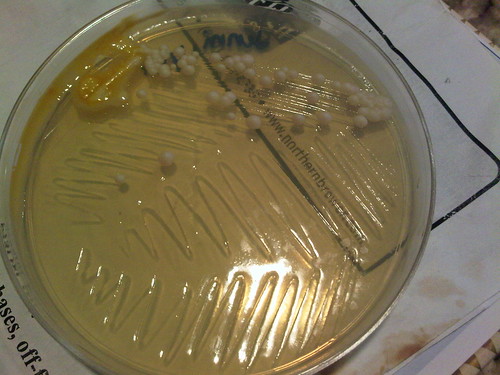conpewter
Well-Known Member
You'll be fine. The slurry will still have the glycerine mixed in for when you freeze them. Mine always settle out in the freezer.

why not just save one bottle of each beer you make, and culture the yeast from that whenever you want to use that yeast strain again.
What about baby food jars? I mean the price is right and I have plenty of those.
I am sure it can stand up to autoclave temps.
So, why not save the cash for grain?
What about baby food jars? I mean the price is right and I have plenty of those.
I am sure it can stand up to autoclave temps.
So, why not save the cash for grain?
why not just save one bottle of each beer you make, and culture the yeast from that whenever you want to use that yeast strain again.

And by doing this, what is the average time to peak fermentation, at which you make the stocks? I assume there is tremendous variability in different strains....
Thanks for the info!
to preserve the purity of a culture rather than maximize viability.
I have done all the methods you suggest, both as a homebrewer and in the micro lab. At the end of the day, I find the frozen yeast bank to be much more convenient, that's all. Streak plating, maintaining agar plates/slants, and building up yeast starters from single cells is a lot of work. Thawing and pitching some frozen yeast into a starter is pretty easy. If you like the microbiology approach, go for it. If you are pressed for time like me and want the shortcut method, frozen yeast banking works very well too. There is no 'better' or 'worse' method, really -- it just depends on what you enjoy.
Cool. Thanks for the quick response. 2 more short questions:
1) Would you expect any different in viability between the 2 methods
2) Have you been able to adequately identify infection or mutation using the slant method? Do you see any difference between the 2 in that regard?

I don't have great answers to these questions as I have never compared the two methods directly. Regarding viability, well-maintained slants in the fridge are probably better than frozen vials in a regular home freezer (although if you had access to a lab-grade freezer then the frozen method is probably better). Regarding infection/mutatation, that doesn't depend on the method of storage. You have to plate your yeast to detect that (which one could do from yeast stored in slants or frozen).
If you want to be really anal (like a lab) and grow yeast from a single cell to ensure purity, then slants and plating your yeast is the method of choice. But if you want something convenient for the purpose of easy homebrewing, I advocate the frozen method (but YMMV).
Cheers!


And yes, I did read that article. Did you see that letter to the editor criticizing their techniques in the latest issue? Apparently you weren't the only one to notice!

Bumping this thread up, I prepared a frozen yeast bank of three strains, S05, Safbrew S06, and Pacman. I used a 20%-30% glycerin, 70% yeast slurry, and put them in my freezer. I went to look at them about a week later and noticed that the glycerin liquid in my vials did not freeze. I'm not too sure if I now have 12 vials of garbage or if everything will work out. I plan to use the pac man again so I'll know when I make my starter. Has anyone run into this problem before or did I screw this one up all on my own?
And how are you going to determine whether that colony you picked doesn't have any mutations from the common strain? I would think you're more likely to get results similar to the original yeast if you save as much as possible.Oh, and isn't this basically the #1 objective here to ensure we continue to produce predictable yeast behavior and characteristics? Might have to work a little harder to build up your starter slowly, but I think keeping the purity intact is priority #1.
, if you're saving 100 million cells, mutations in one isn't a big deal.
one drawback to freezing is to maintain constant temp.

It's actually not a big deal:one drawback to freezing is to maintain constant temp.
Enter your email address to join: